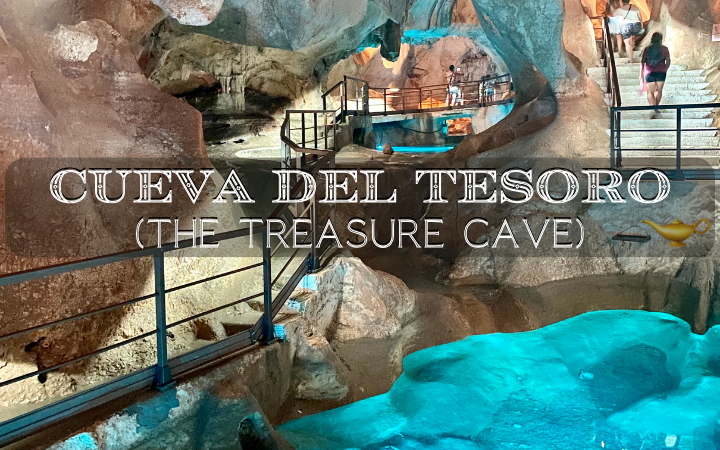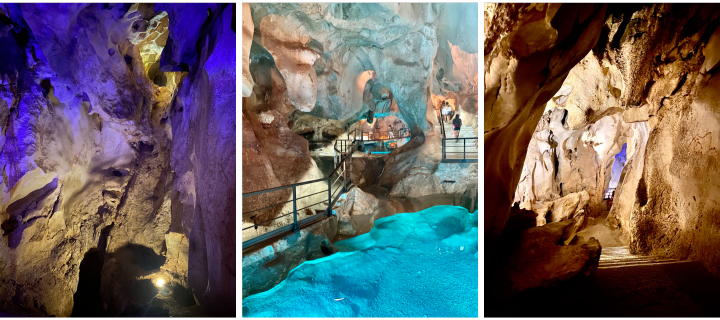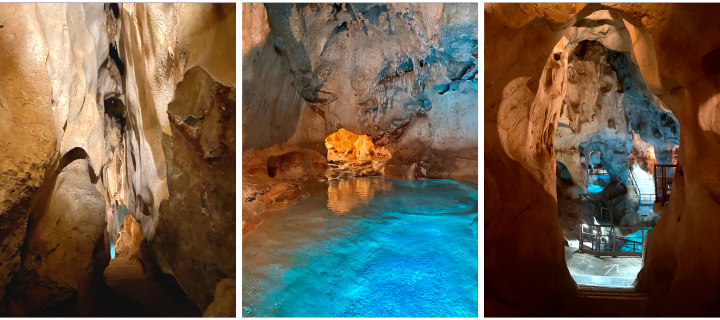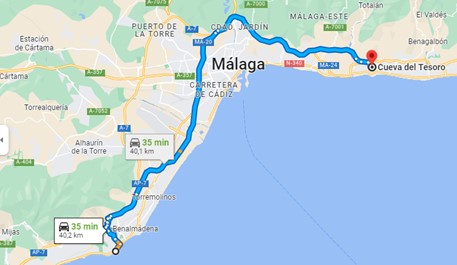
On our latest travels exploring the Costa del Sol, we came across a real hidden gem! It goes by many names, but the oldest one you’ll hear is “Cueva del Higuerón,” although nowadays we know it as “La Cueva del Tesoro” (The Treasure Cave).
The most incredible part? It’s one of only three caves of marine origin in the entire world! Yep, you heard that right, one in Asia, one in Central America, and the last one on the European continent is just a half-hour’s drive from Sunset Beach Club.
A little history…Where does its name come from?
This cave’s history is a real whirlwind journey through time. It goes back to a time when people used stone tools (the Palaeolithic), and it continues through the Bronze Age, the days of the Phoenicians, the mighty Roman Empire, and the rule of the Moors! In the 18th century, a local historian revealed that a man named Marco Crassus once hid out in this cave for a staggering eight months, escaping persecution from the Romans.
Legend has it, the cave holds treasure, but who owned it is still a mystery. Some say it was five Moorish kings who washed up on our shores with a boatload of wealth and decided to stash it here. Others think the Almoravid emperor Tasufín Ibn Ali, in the 12th century, was the one who hid the treasure.
Then there’s the story of Swiss treasure hunter Antonio de la Nari, who spent nearly 30 years on the hunt for this legendary loot, convinced that it was real. He even resorted to using dynamite to blow open new passages in the cave, which ultimately led to his demise in 1847, courtesy of one of those dynamite explosions. His find, or perhaps his legend, earned the cave the nickname “Cueva del Suizo” or “The Swiss’ Cave.”
But, here’s the kicker – the treasure, despite being the cave owner’s (Don Manuel Laza Palacio) personal ‘holy grail’ during the 20th century, nothing was ever actually found. All they discovered was a little lamp with some gold coins tucked away in one of the upper corners of the cave, which just added to the mystery.

Exploring the Cave
Now, let’s talk about the real fun stuff – exploring this mysterious marine cave! First things first, there’s a free audio guide available in English, so you won’t miss out on any of the cave’s fascinating history and secrets.
Over thousands of years, the water carved out a bunch of routes and galleries typical of underwater caves, complete with gorges and columns that form the foundation of what we see today. Later on, when the land popped up above sea level, freshwater seeped in, creating those cool stalactites and stalagmites you’d find in any terrestrial cave. And as you walk through, you can actually hear the water trickling away, with a small lake at the far end.
Originally, there were three separate caves – El Higuerón, El Suizo, and La Victoria. But after renovation work, they joined Cueva del Suizo (aka the Lake Room) and Cueva del Higuerón (Higueron Cave) into the Virgin Room we know today. In the late ’70s, the prehistoric section was kept away from tourists, but thankfully today you’re able to explore it, right next to the Victoria Cave (just a short walk from Cueva del Tesoro).

So, what’s inside this cave now? Well, it’s split into two galleries on either side of the entrance, and each of those galleries has various rooms:
- Virgin Room: The most recently discovered room, where they found that lamp with gold coins.
- Swiss Well: It got its name thanks to the Swiss treasure hunter who used dynamite to open it up.
- Area of Cave Paintings
- Room of Marco Crassus
- Eagle Room: They named it this because a rock formation looks just like an eagle in flight.
- Well of the Higuerón
- Labyrinthine Galleries: These rock formations like to play tricks with the light, which probably fueled some of those old stories about the cave’s mysterious inhabitants.
- Lake Zone
- Noctiluca Sanctuary Room: This room has the temple of the goddess Noctiluca, complete with an altar where they found ashes from animal sacrifices.
- Volcano Room: This one’s the innermost room, and you’ll notice the temperature cranking up, which is how it got its name.
So there you have it, a sneak peek into the mesmerizing Cueva del Tesoro – a true hidden gem that’s chock-full of history and mysteries waiting to be explored!
How to get there + parking
The best way to get there is by car as it’s just a short motorway ride to your destination.

Parking is easy as there is a car park just in front of the entrance, and it’s free.
Entrance fees
- Adults (between 15 & 64 years old) | 4.65 €
- Elderly & Retired, Youth card & Students, Children (between 4 & 14 years old) | 2.75 €
- 0 to 3 year olds | Free
Timetable
Open every day from Monday to Sunday, including holidays.
Closed: December 24th, 25th and 31st, as well as January 1st and 6th.
Winter (1 Oct / 30 Apr)
Morning: 10:00h– 13:00h (closes at 14.00h)
Afternoon: 15:00h – 17:00h (closes at 18.00h)
Summer (1 May / 30 Sep)
Morning: 10:30h – 13:00h (closes at 14.00h)
Afternoon: 16:30h– 19:00h (closes at 20.00h)





